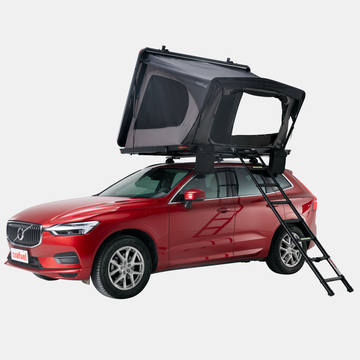
Roof tents undoubtedly offer campers unlimited convenience and adventure possibilities. They can be quickly and conveniently installed on the roof of a vehicle, eliminating the need to set up a cumbersome tent or search for suitable camping spots. In the previous issue, we discussed how to choose a tent and the considerations when selecting one. In this issue, our topic is how to install a roof tent.
Firstly, you need to ensure that the tent you choose is suitable for your vehicle. Pay attention to the dimensions and height of your vehicle, and make sure the roof has sufficient structural strength and stability to support the weight of the roof tent. Generally, vehicles such as SUVs, off-road vehicles, trucks, campervans, and certain sedans are suitable for installing roof tents. Each vehicle's roof has a weight limit, and some sedans may not be suitable for larger or heavier roof tents.
Read and understand the installation manual for the roof tent, familiarize yourself with the installation steps and required tools.
Clean and inspect the roof of your vehicle, ensuring that its surface is clean, flat, and free from noticeable damage or corrosion.
After completing these preparations, you will need to install the roof bars. Roof bars provide the primary support structure for the roof tent. They bear the weight of the tent's top and provide stability by connecting to the roof or roof rack system of the vehicle. They help maintain the overall stability of the roof tent, retain its shape and tension, and ensure balance and support during use. Some roof bars are designed with adjustable features, allowing you to adjust the height of the roof tent as needed. This enables the tent to accommodate different vehicles and usage scenarios, providing greater flexibility.
Roof bars are typically made of lightweight and high-strength materials such as aluminum alloy or carbon fiber. These materials offer sufficient strength and rigidity while reducing overall weight.
Some vehicles come equipped with roof bars, while others may require additional considerations when installing them. These considerations include: whether the roof has a strong structure with sufficient weight-bearing capacity to support the tent's weight, whether the roof has a fixed structure (e.g., convertibles) that is typically retractable or foldable, making it unsuitable for installing roof bars, and whether the roof has a flat surface. If the roof of your vehicle is suitable for roof bars, you can proceed to have them installed at an automotive repair shop or dealership.
The installation method of roof bars is also an important consideration. Some roof bars need to be fixed onto the vehicle's crossbeams or hooks. These roof bars typically have special mounting systems that allow them to be installed directly on the roof, providing stable support points. Other roof bars may use frameless mounting systems such as suction cups or clamps.
Once you have sturdy roof bars in place, you can proceed to install the roof tent. The installation process is usually straightforward. The bottom of the tent is a high-strength composite board with dedicated clamps that securely attach to the roof bars. Simply tighten the screws during installation. Finally, ensure that the roof tent is securely fixed and free from any noticeable looseness.






